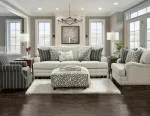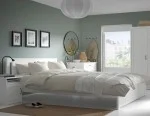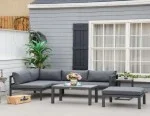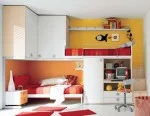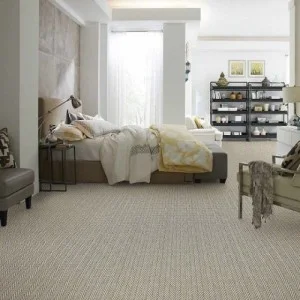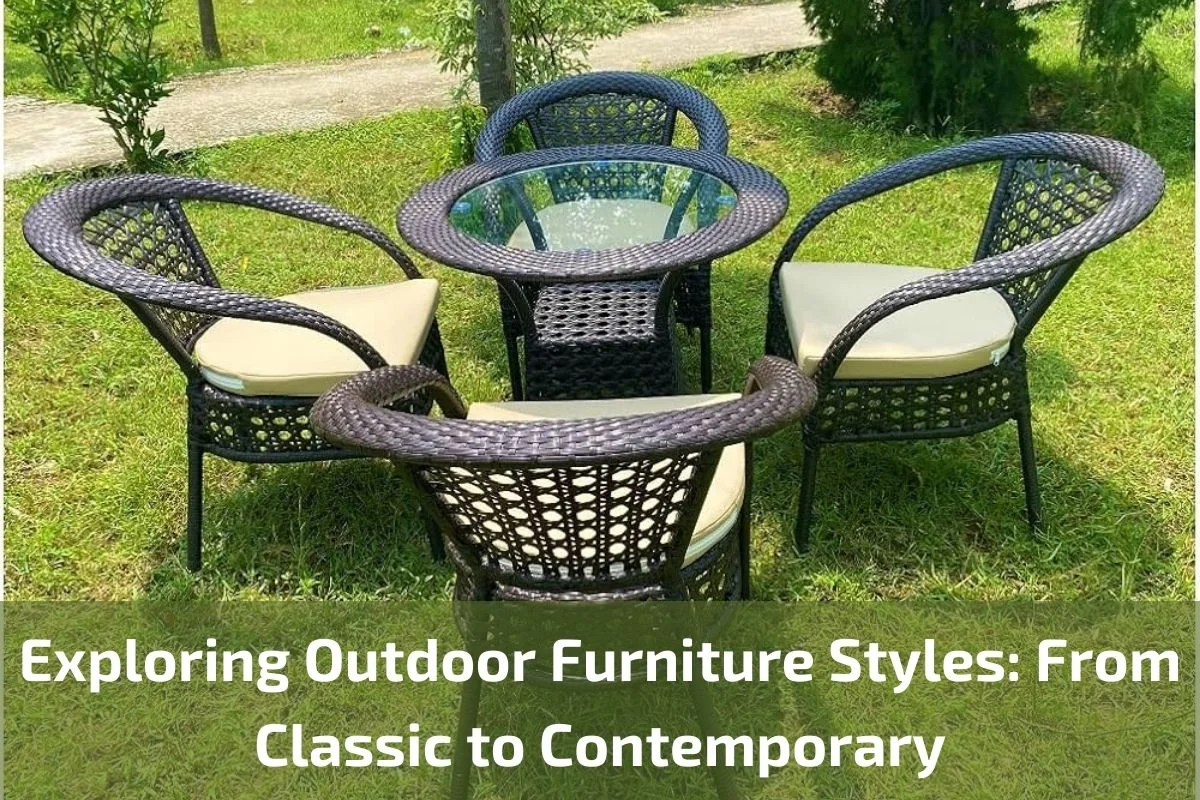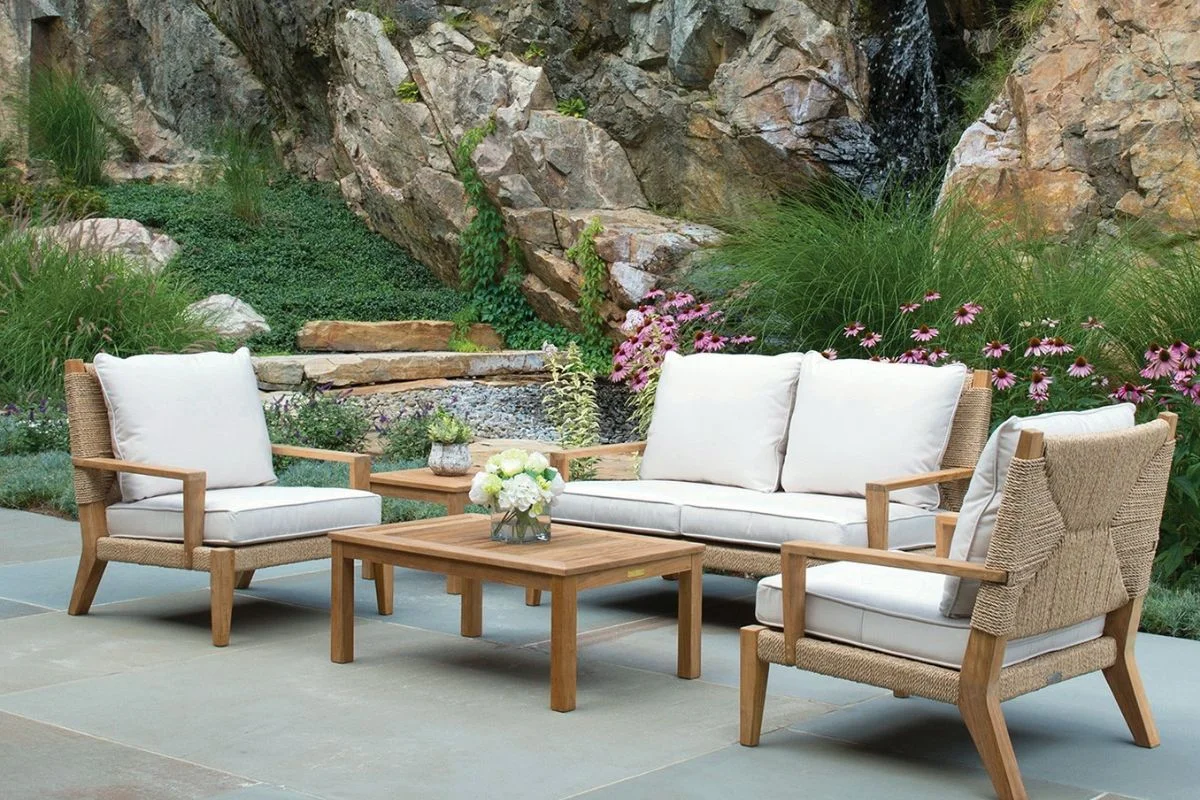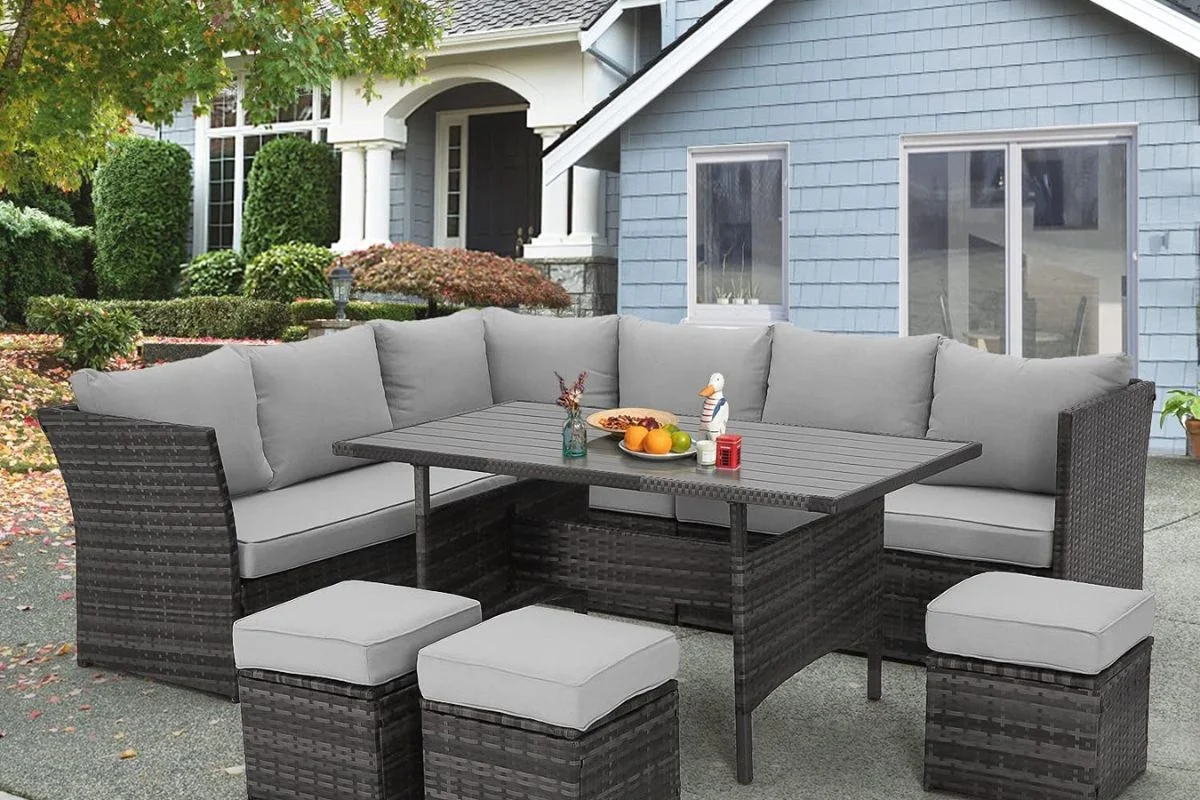Outdoor furniture styles encompass a diverse range of designs, materials, and aesthetics that cater to different preferences and lifestyles. From timeless classics to cutting-edge contemporary pieces, the world of outdoor furniture offers endless possibilities for creating inviting and stylish outdoor spaces.
Whether you’re drawn to the elegance of traditional designs or the sleek simplicity of modern aesthetics, the outdoor furniture you choose sets the tone for your outdoor oasis. Each style reflects unique influences, trends, and sensibilities, allowing you to express your personality and create a space that resonates with your individual taste.
In this exploration of outdoor furniture styles, we’ll journey through the timeless allure of classic designs, the innovative spirit of contemporary trends, and everything in between. By delving into the characteristics, inspirations, and key features of each style, you’ll gain insight into how to curate an outdoor environment that reflects your vision and enhances your outdoor living experience.
Setting the Scene: Importance of Outdoor Furniture in Living Spaces
Imagine stepping outside into your backyard or onto your balcony, greeted by the warmth of the sun, the gentle rustle of leaves, and the fresh air that invigorates your senses. Outdoor living spaces have become essential extensions of our homes, offering opportunities for relaxation, entertainment, and connection with nature. At the heart of these outdoor sanctuaries lies the indispensable element: outdoor furniture.
Outdoor furniture plays a pivotal role in transforming barren outdoor spaces into inviting retreats where moments of serenity and joy unfold. Whether it’s a cozy patio set for intimate gatherings, a sprawling sectional for lounging under the stars, or a sleek dining set for alfresco meals with loved ones, outdoor furniture serves as the anchor that defines the ambiance and functionality of outdoor living spaces.
The importance of outdoor furniture goes beyond mere aesthetics; it embodies the essence of outdoor living, facilitating comfort, leisure, and conviviality. It provides a place to unwind after a hectic day, to savor leisurely meals with family and friends, or to simply bask in the beauty of nature’s splendor. From quiet mornings with a cup of coffee to lively evenings filled with laughter and conversation, outdoor furniture sets the stage for cherished moments and lasting memories.
Moreover, outdoor furniture serves as a reflection of personal style and taste, allowing homeowners to imbue their outdoor spaces with character, charm, and individuality. Whether your preference leans towards rustic charm, contemporary chic, or eclectic charm, there exists a myriad of outdoor furniture styles, materials, and designs to suit every aesthetic sensibility and lifestyle.
In today’s fast-paced world, outdoor living spaces offer a respite from the hustle and bustle of daily life—a sanctuary where we can reconnect with ourselves, with loved ones, and with the natural world that surrounds us. Outdoor furniture, with its functionality, comfort, and style, elevates these outdoor sanctuaries, transforming them into havens of relaxation, rejuvenation, and delight.
Characteristics and features of classic outdoor furniture
Classic outdoor furniture embodies timeless elegance, enduring craftsmanship, and traditional design elements that have stood the test of time. Here are some key characteristics and features that define classic outdoor furniture:
Traditional Materials: Classic outdoor furniture is often crafted from durable and weather-resistant materials such as wrought iron, teak wood, and cast aluminum. These materials are renowned for their strength, longevity, and ability to withstand outdoor elements.
Ornate Details: Classic outdoor furniture is characterized by intricate details and decorative embellishments that add charm and sophistication to each piece. From intricate scrollwork to floral motifs and lattice patterns, these ornate details evoke a sense of old-world craftsmanship and elegance.
Timeless Silhouettes: Classic outdoor furniture features timeless silhouettes and iconic designs that have remained popular across generations. From gracefully curved armrests to gracefully tapered legs, these classic silhouettes exude a sense of refinement and grace.
Handcrafted Artistry: Classic outdoor furniture is often handcrafted by skilled artisans who take pride in their craft and pay attention to every detail. Each piece is meticulously crafted to achieve the highest standards of quality, durability, and beauty.
Neutral Color Palette: Classic outdoor furniture typically features a neutral color palette, including shades of white, cream, black, and brown. These timeless hues complement a variety of outdoor settings and allow the furniture to seamlessly blend into its surroundings.
Versatile Design: Classic outdoor furniture is known for its versatility and adaptability to different outdoor spaces and architectural styles. Whether placed in a formal garden, a cozy courtyard, or a sprawling patio, classic outdoor furniture adds a touch of sophistication and charm to any setting.
Comfortable Seating: Despite its elegant appearance, classic outdoor furniture prioritizes comfort and functionality. Cushioned seats, ergonomic designs, and ample proportions ensure that occupants can relax and unwind in style.
Low Maintenance: Classic outdoor furniture is designed to require minimal maintenance and upkeep, making it ideal for outdoor environments. Weather-resistant finishes and materials are easy to clean and maintain, allowing homeowners to enjoy their outdoor furniture for years to come.
Enduring Appeal: Perhaps the most defining characteristic of classic outdoor furniture is its enduring appeal and timeless beauty. Unlike trendy or contemporary designs that may come and go, classic outdoor furniture transcends fleeting fashions and remains a symbol of enduring style and sophistication.
Exploring Outdoor Furniture Materials
Outdoor furniture materials play a crucial role in determining the durability, aesthetics, and performance of furniture pieces in outdoor environments. From natural woods to synthetic materials engineered for outdoor use, there is a wide range of options available to suit different preferences and climates. Let’s explore some of the most common outdoor furniture materials:
Wood:
- Teak: Known for its natural oils and dense grain, teak is highly resistant to moisture, rot, and insects, making it a popular choice for outdoor furniture. Teak furniture develops a beautiful silver-gray patina over time if left untreated.
- Cedar: Cedar is naturally resistant to decay and insects, making it an excellent choice for outdoor furniture. It has a distinctive aroma and a rich, reddish-brown color that adds warmth to outdoor spaces.
- Eucalyptus: Eucalyptus is a sustainable hardwood known for its durability and resistance to decay. It has a light brown color and can be treated with oil to maintain its appearance.
- Acacia: Acacia wood is prized for its durability and water-resistant properties. It features a rich, golden-brown hue and can withstand outdoor elements with proper maintenance.
Metal:
- Aluminum: Lightweight, durable, and rust-resistant, aluminum is a popular choice for outdoor furniture frames. It can be powder-coated in various colors and finishes to enhance its appearance and longevity.
- Wrought Iron: Known for its strength and classic appearance, wrought iron is a timeless choice for outdoor furniture. It can be intricately designed with ornate details and withstands harsh weather conditions with proper care.
- Steel: Steel outdoor furniture is strong and sturdy, making it suitable for heavy-duty use. It can be powder-coated for added protection against rust and corrosion.
- Cast Iron: Cast iron furniture is heavy and durable, with intricate designs and decorative details. It requires regular maintenance to prevent rust and corrosion.
Synthetic Materials:
- Resin Wicker: Synthetic resin wicker is lightweight, durable, and weather-resistant, making it ideal for outdoor furniture. It mimics the look of natural wicker but is more resistant to fading, cracking, and mildew.
- Polyethylene (PE) Wicker: PE wicker is another synthetic material used in outdoor furniture. It is UV-resistant, water-resistant, and easy to clean, making it suitable for outdoor use in various climates.
- HDPE (High-Density Polyethylene): HDPE is a durable and eco-friendly material used in outdoor furniture. It is resistant to fading, cracking, and warping, making it an ideal choice for outdoor environments.
- Plastic: Plastic outdoor furniture is lightweight, affordable, and easy to clean. It is available in a variety of colors and styles, making it suitable for casual outdoor settings.
Other Materials:
- Concrete: Concrete furniture is durable, heavy, and weather-resistant, making it suitable for outdoor use. It can be molded into various shapes and finishes to create unique outdoor furniture pieces.
- Glass: Tempered glass tabletops are often used in outdoor dining sets for their durability and easy maintenance. They are resistant to scratches, stains, and heat, making them suitable for outdoor use.
Factors to Consider When Choosing Outdoor Furniture
Selecting the right outdoor furniture involves considering several important factors to ensure that your investment meets your needs and withstands the elements. Here are key factors to keep in mind when choosing outdoor furniture:
Durability: Outdoor furniture should be durable enough to withstand exposure to sunlight, rain, wind, and temperature fluctuations. Look for materials such as teak, aluminum, and HDPE (High-Density Polyethylene) that are known for their durability and weather resistance.
Climate Considerations: Consider the climate in your area when choosing outdoor furniture. If you live in a region with high humidity, extreme heat, or frequent rain, opt for materials that can withstand these conditions without deteriorating or fading quickly.
Maintenance Requirements: Different outdoor furniture materials have varying maintenance needs. Consider how much time and effort you are willing to invest in maintaining your outdoor furniture. For example, wood furniture may require periodic sealing or oiling, while synthetic materials like resin wicker are low-maintenance and easy to clean.
Comfort: Comfort is paramount when it comes to outdoor furniture. Test out seating options to ensure that they provide adequate support and cushioning. Look for ergonomic designs and consider adding cushions or pillows for extra comfort.
Size and Scale: Consider the size and scale of your outdoor space when choosing furniture. Measure the available space and take into account factors such as walkways, traffic flow, and clearance around furniture pieces. Choose furniture that fits comfortably within your outdoor space without overcrowding it.
Functionality: Think about how you plan to use your outdoor space and choose furniture that meets your needs. If you enjoy dining outdoors, opt for a dining set with ample seating. For lounging and relaxation, consider chaise lounges, daybeds, or hammocks.
Style and Aesthetics: Outdoor furniture should complement the architectural style of your home and reflect your personal taste and aesthetic preferences. Consider the overall design theme of your outdoor space and choose furniture that enhances the visual appeal of the area.
Versatility: Choose outdoor furniture that offers versatility and flexibility for different occasions and activities. Look for modular furniture pieces that can be rearranged to accommodate different seating arrangements or multi-functional pieces that serve dual purposes, such as storage benches or ottomans with hidden storage.
Budget: Set a budget for your outdoor furniture investment and prioritize quality and durability within your budget range. While higher-quality materials may come with a higher upfront cost, they often offer better longevity and performance, ultimately saving you money in the long run.
Warranty and Return Policy: Before making a purchase, review the warranty and return policy of the outdoor furniture manufacturer or retailer. A generous warranty can provide peace of mind and protection against manufacturing defects, while a flexible return policy allows you to exchange or return furniture that doesn’t meet your expectations.
Tips for Maintaining Outdoor Furniture
Maintaining outdoor furniture ensures its longevity, performance, and aesthetic appeal despite exposure to the elements. Here are some essential tips for keeping your outdoor furniture in top condition:
Regular Cleaning: Regularly clean outdoor furniture to remove dirt, dust, pollen, and other debris that can accumulate over time. Use a mild detergent or specialized outdoor furniture cleaner and a soft brush or cloth to gently scrub surfaces. Rinse thoroughly with water and allow furniture to air dry completely.
Protect from the Elements: Protect outdoor furniture from prolonged exposure to harsh sunlight, rain, snow, and extreme temperatures. Consider investing in furniture covers or storage solutions to shield furniture from the elements when not in use. Covering or storing furniture during inclement weather can help prevent damage, fading, and deterioration.
Treat Wood Furniture: If you have wood outdoor furniture, treat it with a protective sealant, oil, or stain to enhance its resistance to moisture, UV rays, and pests. Apply treatments according to manufacturer recommendations and reapply as needed to maintain wood’s natural beauty and integrity.
Check for Rust and Corrosion: Inspect metal outdoor furniture regularly for signs of rust, corrosion, or oxidation, especially in areas with high humidity or salt exposure. Remove rust with a wire brush or sandpaper, then apply a rust-resistant primer and paint to affected areas to prevent further corrosion.
Tighten Hardware: Periodically check and tighten screws, bolts, nuts, and other hardware on outdoor furniture to ensure structural stability and safety. Loose hardware can lead to wobbling, instability, and potential accidents, so tighten any loose fasteners promptly.
Clean Upholstery: If your outdoor furniture has cushions or upholstery, clean them regularly to remove dirt, stains, and mildew. Follow manufacturer instructions for cleaning and care, and consider using removable, machine-washable covers for easy maintenance.
Prevent Mold and Mildew: Mold and mildew thrive in moist environments, so take proactive measures to prevent their growth on outdoor furniture. Allow furniture to dry completely after rain or cleaning, and ensure proper ventilation to reduce humidity levels. Consider using mold and mildew inhibitors or applying a mildew-resistant sealant to protect furniture surfaces.
Store Seasonally: During the off-season or when outdoor furniture won’t be used for an extended period, consider storing it indoors or in a covered area to protect it from harsh weather and environmental damage. Clean and dry furniture thoroughly before storage, and use furniture covers or tarps to provide additional protection.
Perform Routine Maintenance: Schedule routine maintenance tasks for outdoor furniture, such as oiling wood surfaces, lubricating moving parts, and inspecting for signs of wear and tear. Address any issues promptly to prevent further damage and maintain furniture’s functionality and appearance.
Follow Manufacturer Guidelines: Always follow manufacturer recommendations and guidelines for cleaning, maintenance, and care specific to your outdoor furniture materials and finishes. Adhering to manufacturer instructions helps ensure optimal performance, longevity, and warranty coverage.
Conclusion
In conclusion, maintaining outdoor furniture is essential for preserving its beauty, durability, and functionality in outdoor environments. By following the tips outlined above, you can protect your investment and ensure that your outdoor furniture remains in top condition despite exposure to the elements.
Lorem ipsum dolor sit amet, consectetur adipiscing elit. Ut elit tellus, luctus nec ullamcorper mattis, pulvinar dapibus leo.
